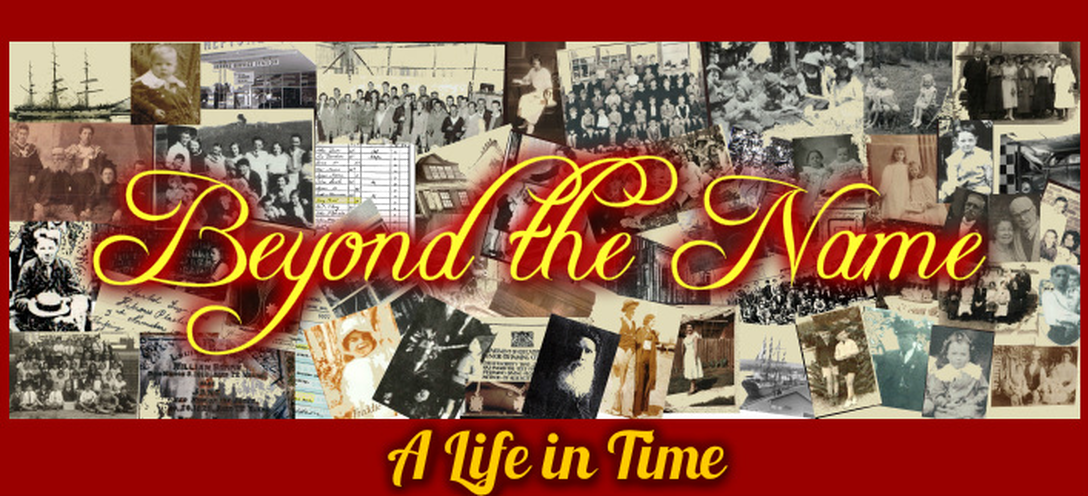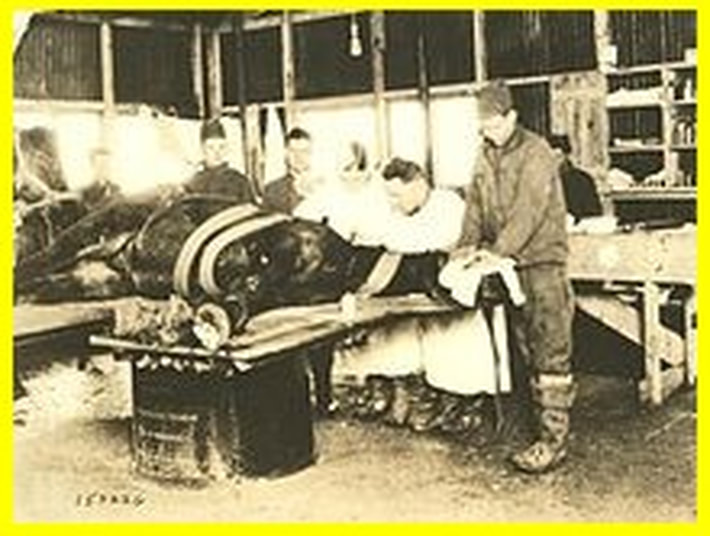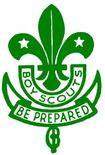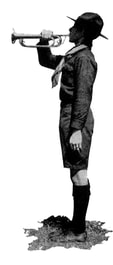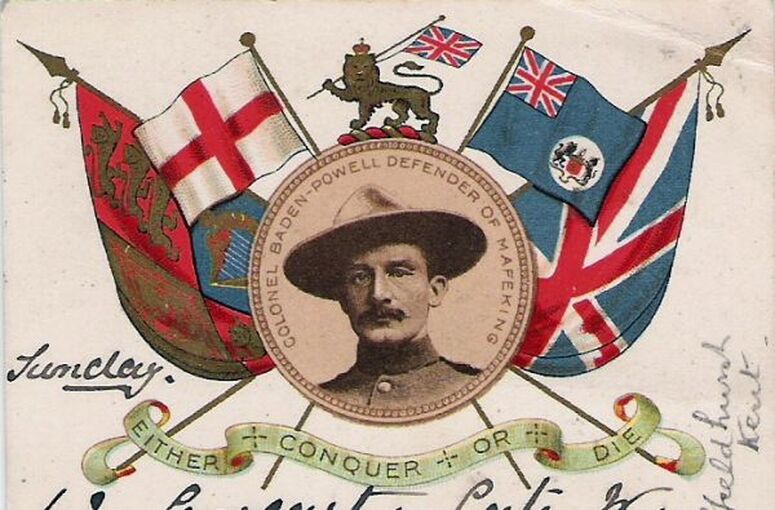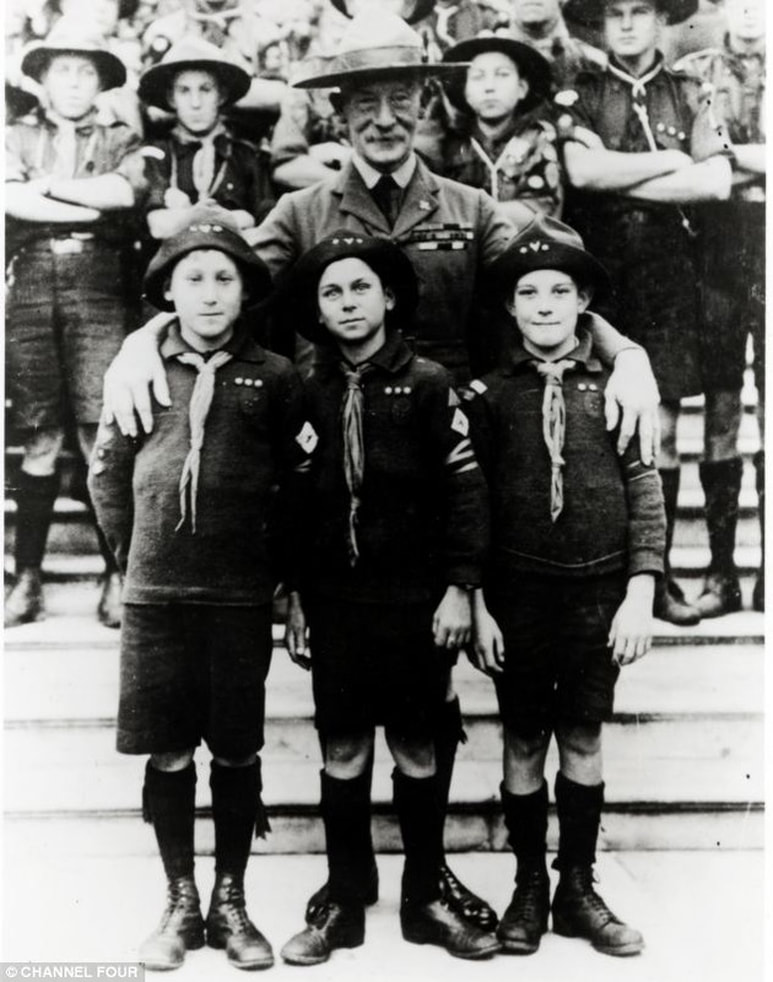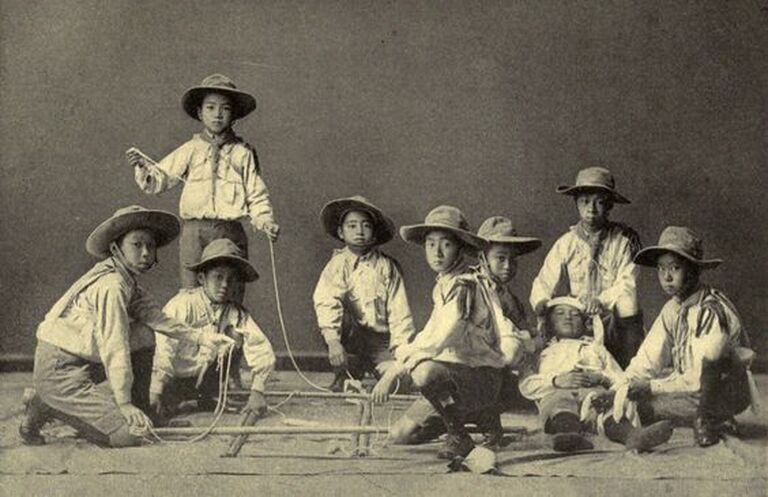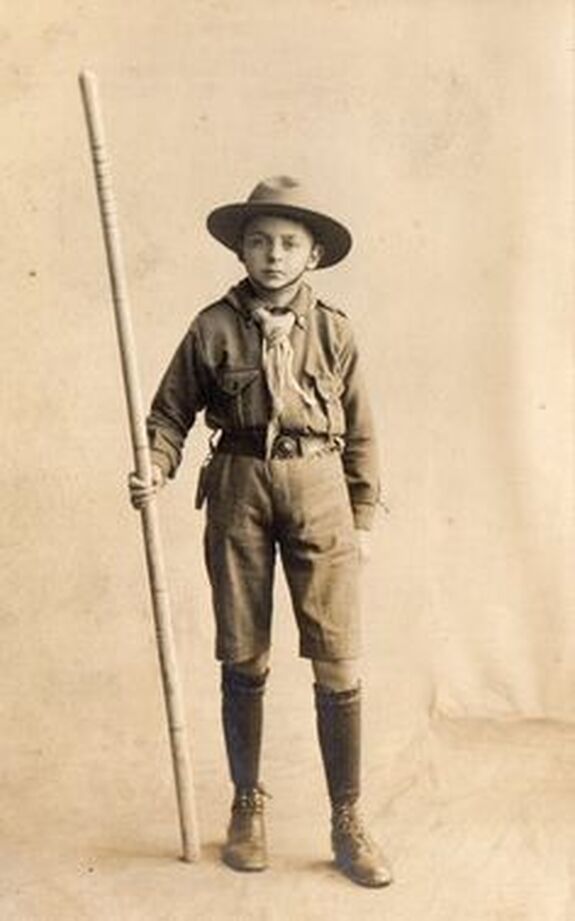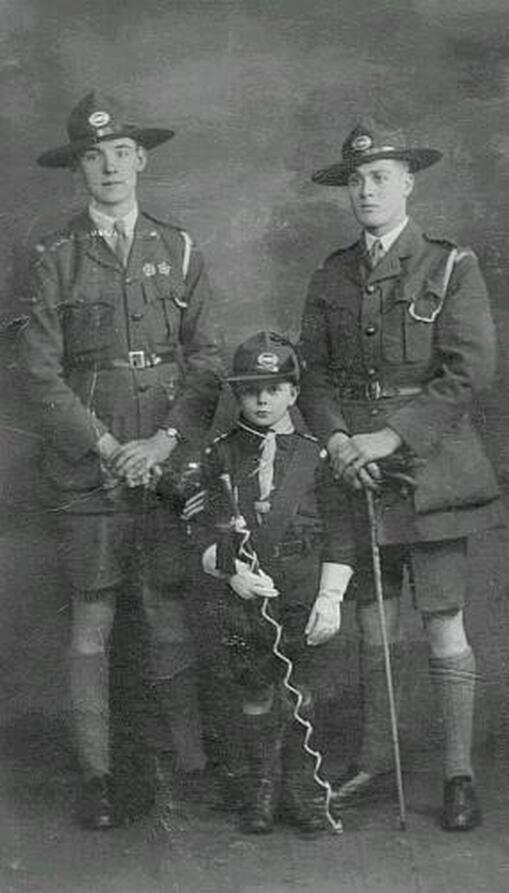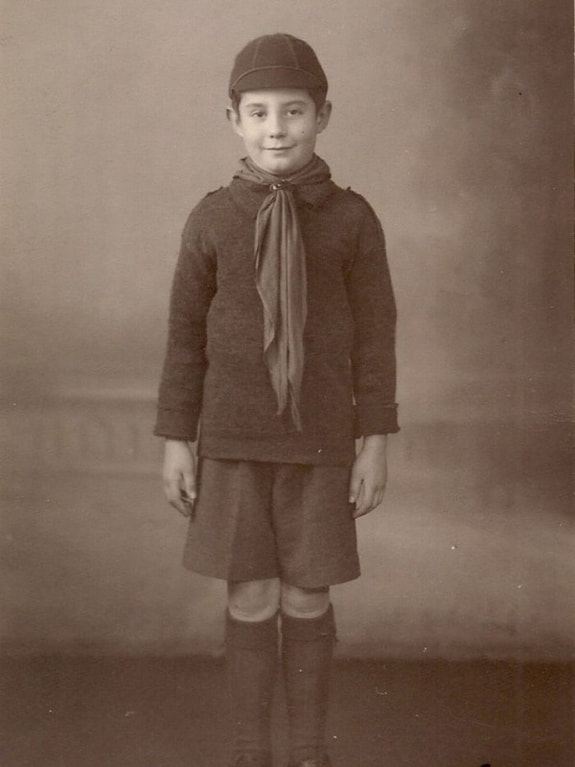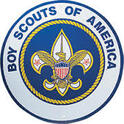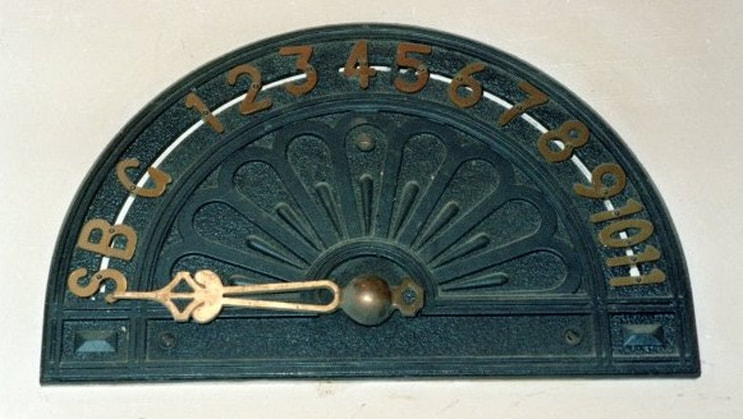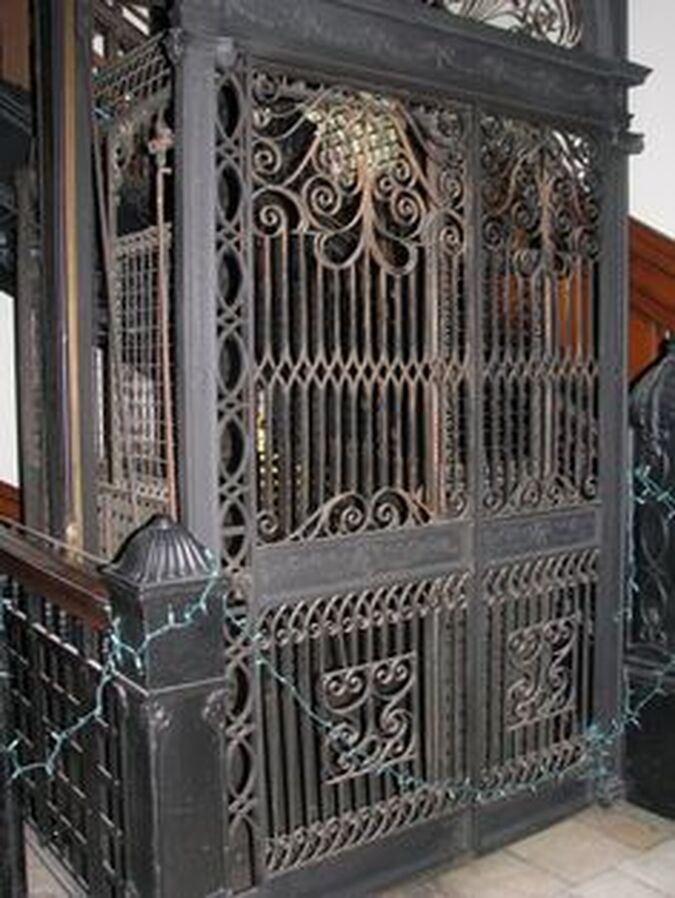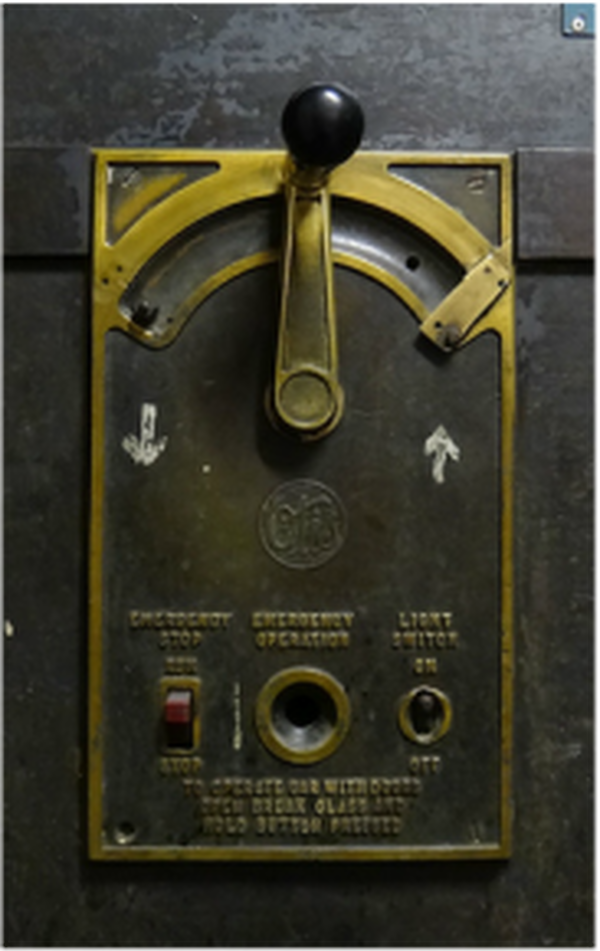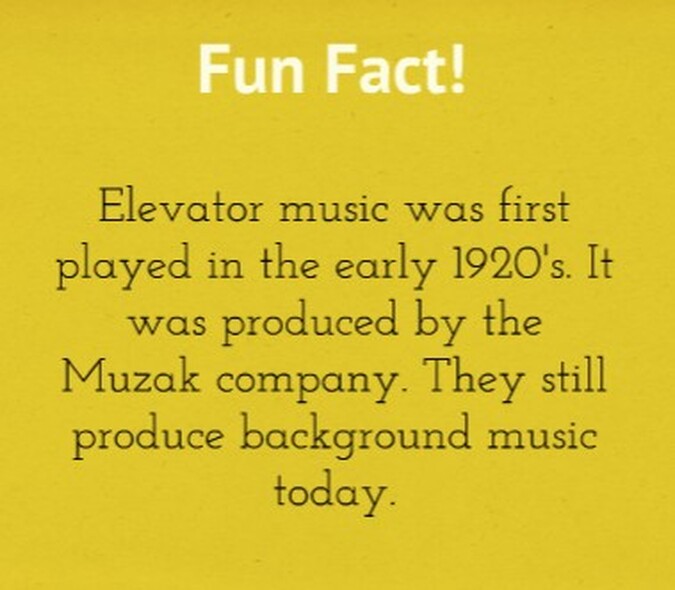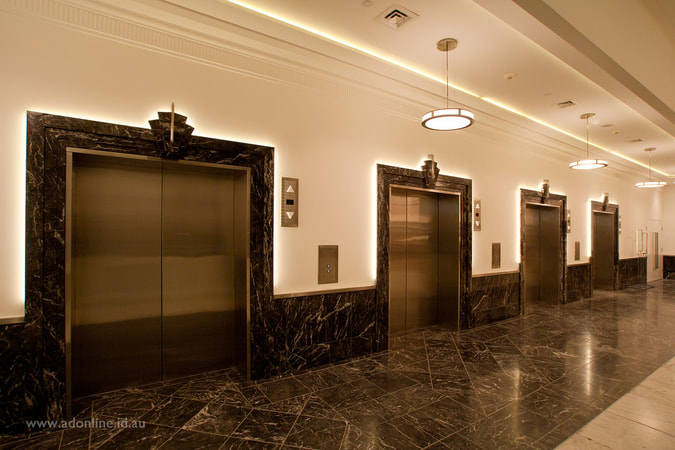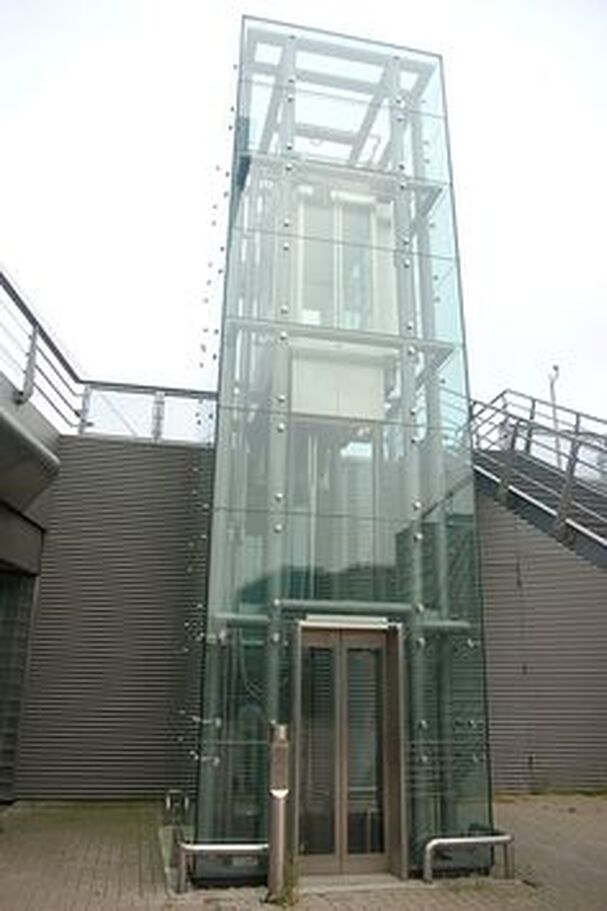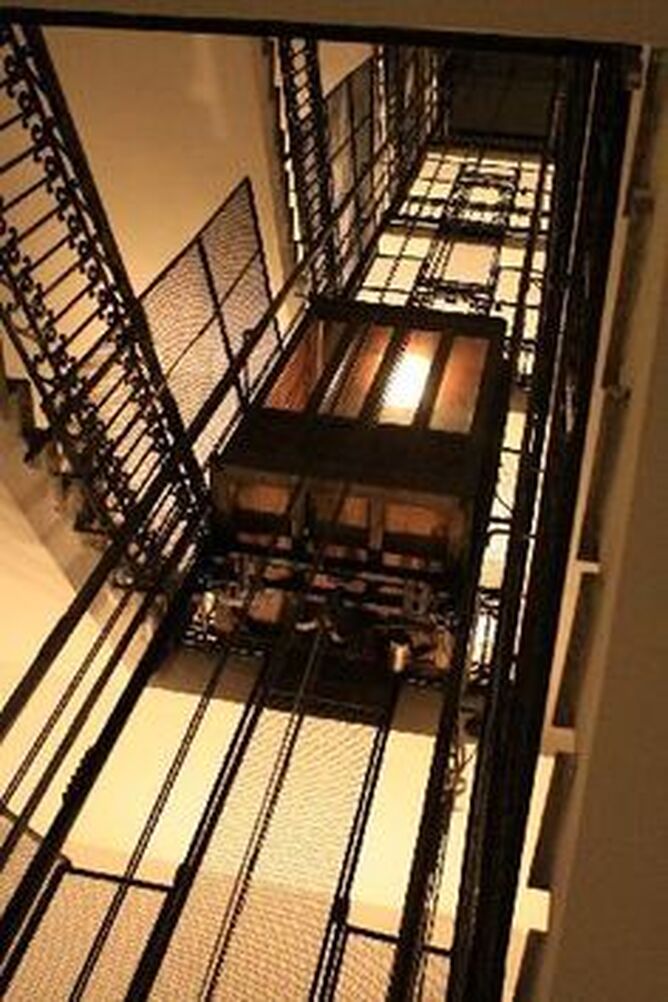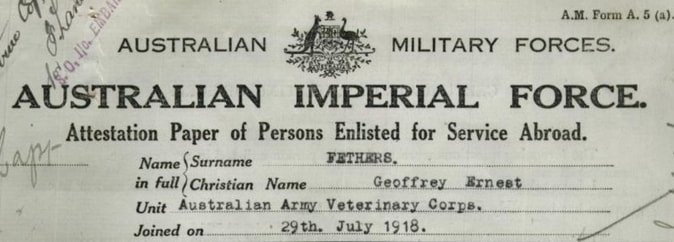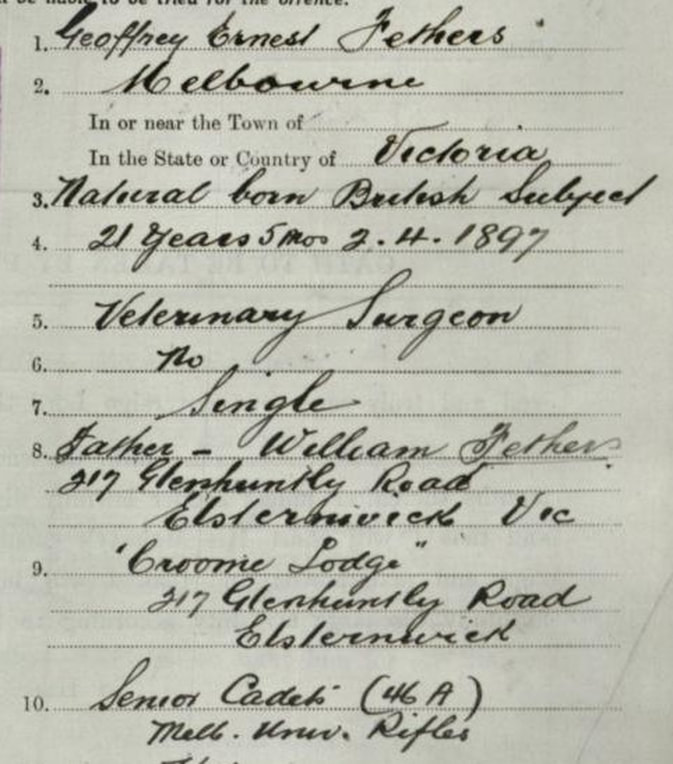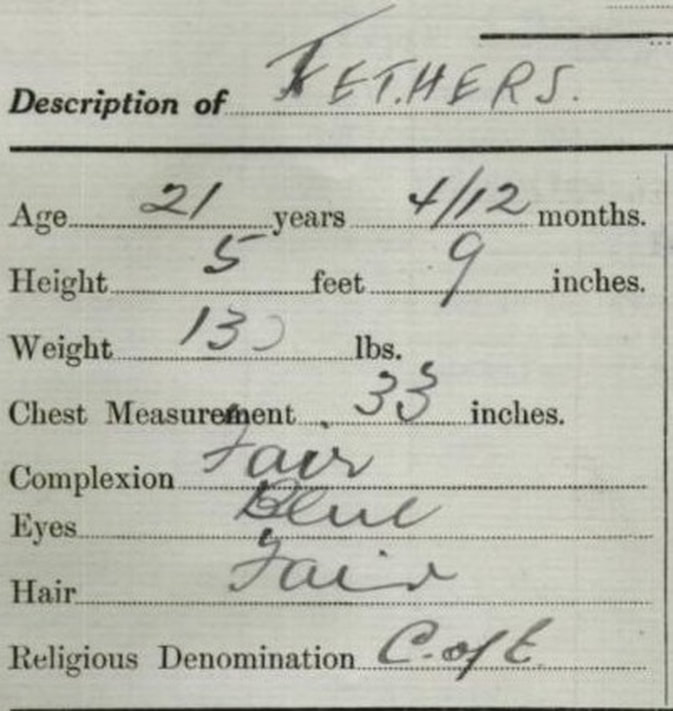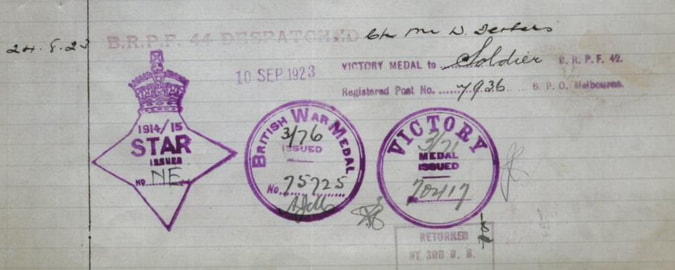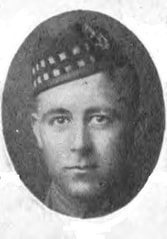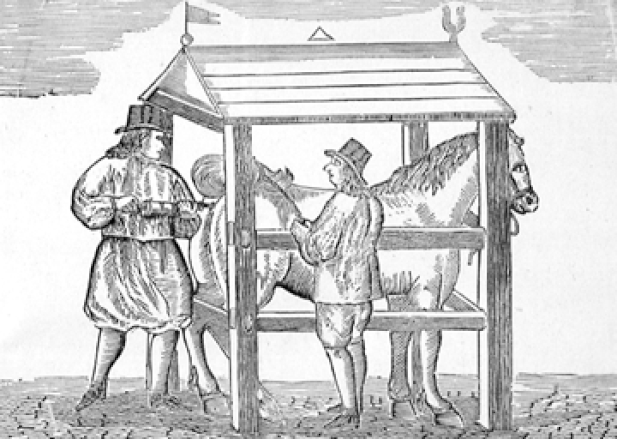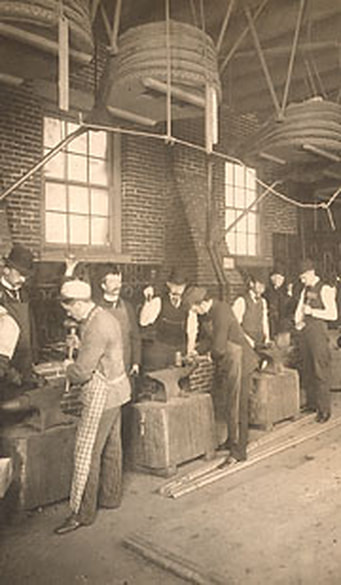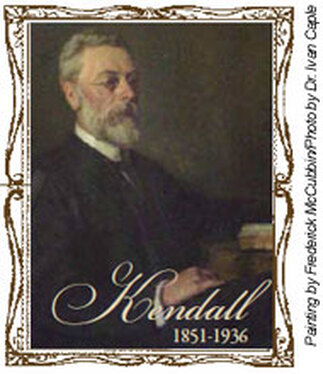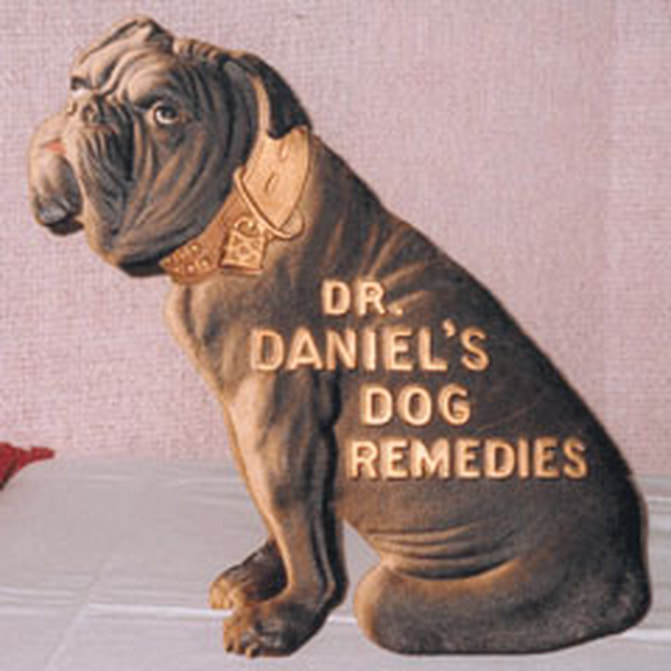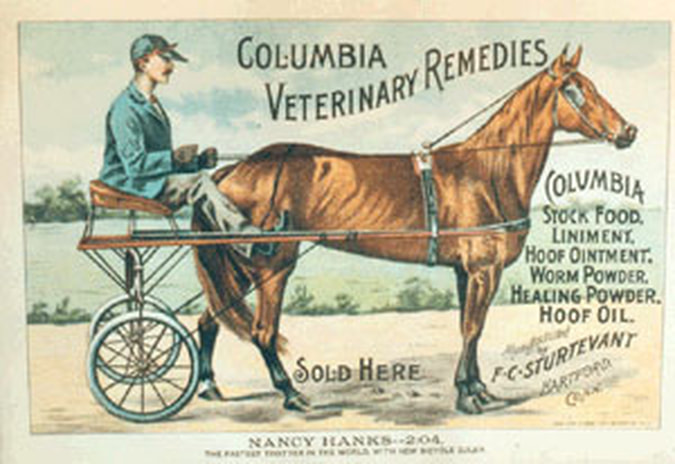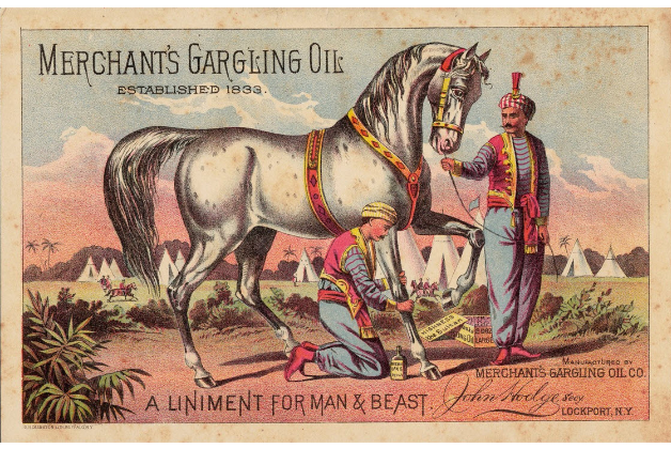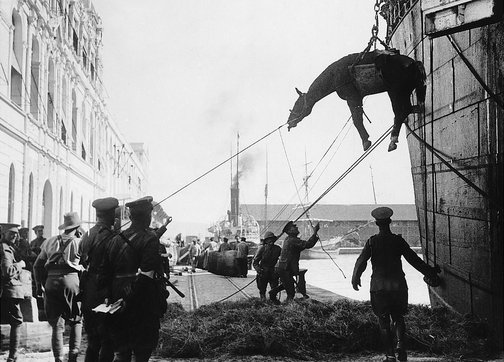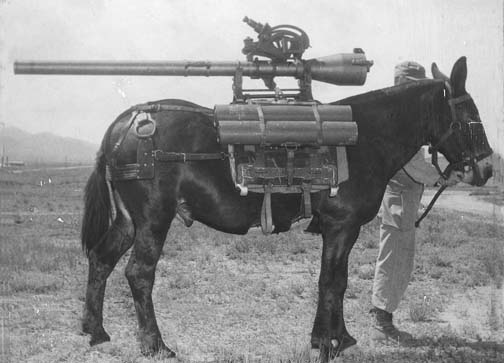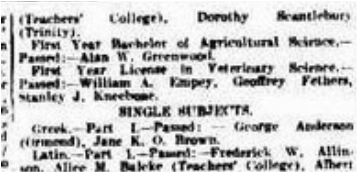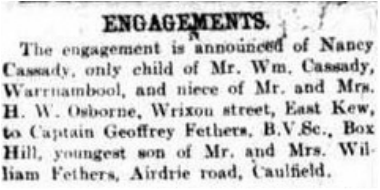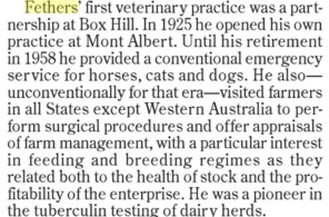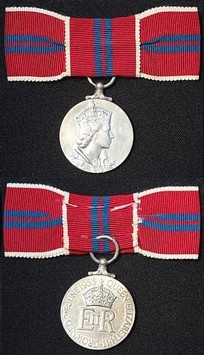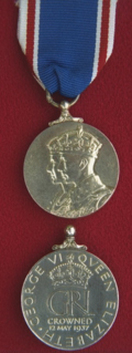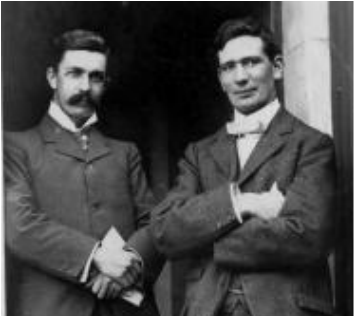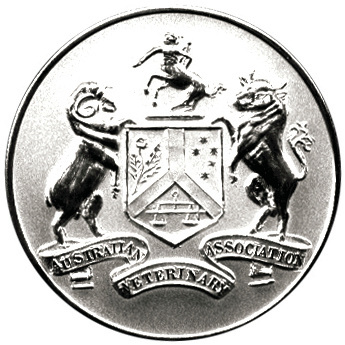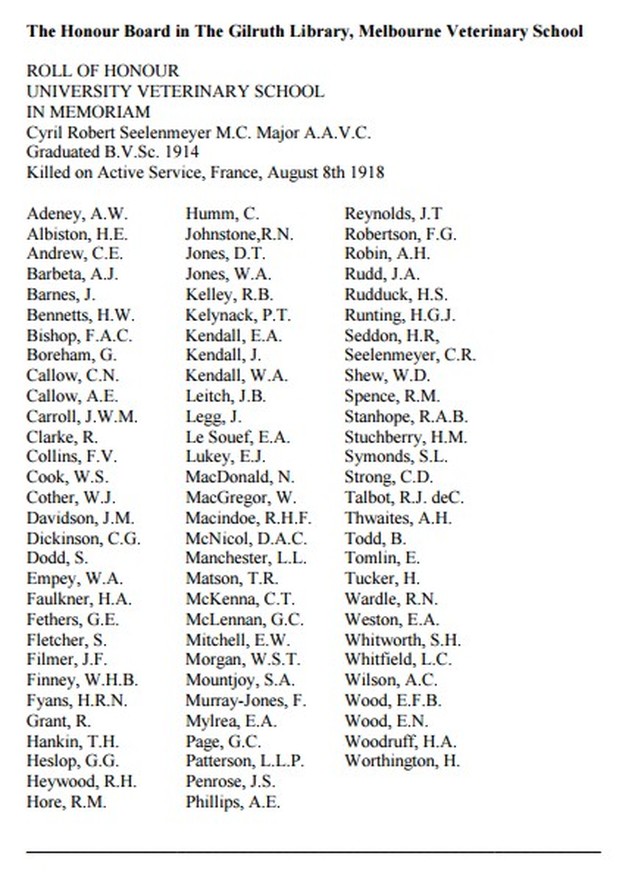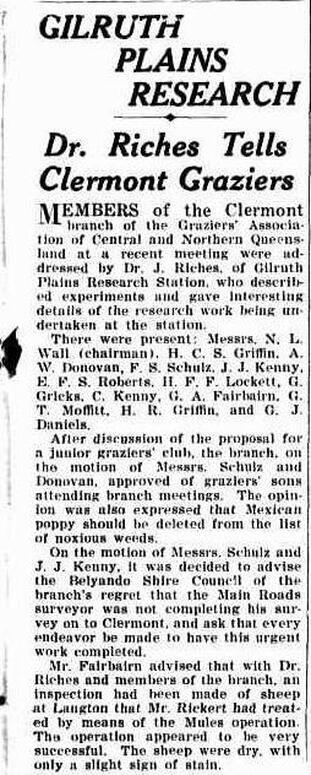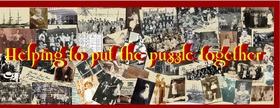|
*Please note- This site search does not include the Vic. & Tas. BMD's, Lots o' Links & Worth a Look Books
|
GEOFFREY ERNEST FETHERS
1ST BOY SCOUT IN AUSTRALIA, AUSTRALIAN ARMY VETERINARY CORPS
1897-1988
Geoffrey Ernest Fethers was born on 2 April 1897 in Malvern, Victoria, son of Victorian-born parents William Fethers and Edith Mary Clarke.
Educated at Caulfield Grammar School, Fethers spent a year at Longeronong Agricultural College before attending the University of Melbourne. In 1918 on 5 August he was registered to practice veterinary science in Victoria & also appointed a captain in the Australian Army Veterinary Corps, Australian Imperial Forces, his 4 brothers having also joined the AIF. He arrived in Egypt on 19 October & was attached to the 5th Light Horse Regiment before returning to Melbourne when his appointment terminated on 25 November 1919. In 1921-37 he served in the Militia, rising to Major in 1929. He married Annie (Nancy) Browne Cassady on 6 Nov. 1924 at St John’s C. of E. Camberwell.
Fethers’ first veterinary practice was a partnership in Box Hill, then in 1925 he opened his own practice at Mont Albert. Until his retirement in 1958 he provided an emergency service for horses, cats and dogs. Also, he visited farmers in all States (except W.A.) to perform surgical procedures & offer appraisals of farm management, with an interest in feeding & breeding regimes. He was also a pioneer in the tuberculin testing of dairy herds.
Fethers became a member & later President of the Veterinary Board of Victoria (1924-42) & honorary
Secretary & President of the Veterinary Association of Victoria (1924-33). He was a part-time lecturer at Dookie Agricultural College (1927-40), a founding council member of Marcus Oldham Agricultural College, Geelong (1961-69) & a veterinary consultant to the Royal Agricultural Society, the Melbourne Zoological Gardens, the Sir Colin MacKenzie sanctuary at Healesville & the Victorian Graziers Association. He strongly supported the reopening in 1962 of the University of Melbourne’s Veterinary school, which had closed in 1928.
Agricultural & veterinary journalism provided Fethers’ most public face: for decades he offered valued advice, tailored to the animal-loving urban community as well as to the dairy, sheep and cattle industries. He wrote a regular column for the Weekly Times for 55 years, a selection of which was published as 'An Elephant in My Garden' (1980); he also provided much material to 6 editions of the Weekly Times Farmers Handbook (1934-78) and for 50 years contributed to the Pastoral Review and Graziers Record. He had many radio appearances including frequent spots on the Australian Broadcasting Commission’s `Country Hour’.
In 1980 Fethers was awarded the Gilruth prize by the AVA. He had also received King George VI (1937) & Queen Elizabeth II (1953) coronation medals. In 1942-57 he was a member of the Royal Society of Vic. the Australian Club, the Rotary Club of Melb. (president 1936) & the Peninsula Country & Metro. Golf clubs. In his later years he was a lawn bowls enthusiast at the Glenferrie Hill Recreation Club, where he was president,
super-veteran & honorary life member. A modest man of conservative bearing despite his intense involvement in leadership positions.
Geoffrey Fethers died on 26 September 1988 at West Heidelberg at 91 years, out living his wife by 5 years.
He was cremated at the Burwood Cemetery.
Reference
Australian Dictionary of Biography
http://adb.anu.edu.au/biography/fethers-geoffrey-ernest-geoff-12486
Educated at Caulfield Grammar School, Fethers spent a year at Longeronong Agricultural College before attending the University of Melbourne. In 1918 on 5 August he was registered to practice veterinary science in Victoria & also appointed a captain in the Australian Army Veterinary Corps, Australian Imperial Forces, his 4 brothers having also joined the AIF. He arrived in Egypt on 19 October & was attached to the 5th Light Horse Regiment before returning to Melbourne when his appointment terminated on 25 November 1919. In 1921-37 he served in the Militia, rising to Major in 1929. He married Annie (Nancy) Browne Cassady on 6 Nov. 1924 at St John’s C. of E. Camberwell.
Fethers’ first veterinary practice was a partnership in Box Hill, then in 1925 he opened his own practice at Mont Albert. Until his retirement in 1958 he provided an emergency service for horses, cats and dogs. Also, he visited farmers in all States (except W.A.) to perform surgical procedures & offer appraisals of farm management, with an interest in feeding & breeding regimes. He was also a pioneer in the tuberculin testing of dairy herds.
Fethers became a member & later President of the Veterinary Board of Victoria (1924-42) & honorary
Secretary & President of the Veterinary Association of Victoria (1924-33). He was a part-time lecturer at Dookie Agricultural College (1927-40), a founding council member of Marcus Oldham Agricultural College, Geelong (1961-69) & a veterinary consultant to the Royal Agricultural Society, the Melbourne Zoological Gardens, the Sir Colin MacKenzie sanctuary at Healesville & the Victorian Graziers Association. He strongly supported the reopening in 1962 of the University of Melbourne’s Veterinary school, which had closed in 1928.
Agricultural & veterinary journalism provided Fethers’ most public face: for decades he offered valued advice, tailored to the animal-loving urban community as well as to the dairy, sheep and cattle industries. He wrote a regular column for the Weekly Times for 55 years, a selection of which was published as 'An Elephant in My Garden' (1980); he also provided much material to 6 editions of the Weekly Times Farmers Handbook (1934-78) and for 50 years contributed to the Pastoral Review and Graziers Record. He had many radio appearances including frequent spots on the Australian Broadcasting Commission’s `Country Hour’.
In 1980 Fethers was awarded the Gilruth prize by the AVA. He had also received King George VI (1937) & Queen Elizabeth II (1953) coronation medals. In 1942-57 he was a member of the Royal Society of Vic. the Australian Club, the Rotary Club of Melb. (president 1936) & the Peninsula Country & Metro. Golf clubs. In his later years he was a lawn bowls enthusiast at the Glenferrie Hill Recreation Club, where he was president,
super-veteran & honorary life member. A modest man of conservative bearing despite his intense involvement in leadership positions.
Geoffrey Fethers died on 26 September 1988 at West Heidelberg at 91 years, out living his wife by 5 years.
He was cremated at the Burwood Cemetery.
Reference
Australian Dictionary of Biography
http://adb.anu.edu.au/biography/fethers-geoffrey-ernest-geoff-12486
Boy Scouts
Geoffrey Fethers was the first Boy Scout in Victoria, arguably in the world. The story goes that Mr Fethers senior, who was the agent for Otis Elevators in Vic., went to England on a business trip in 1906 & met the then General Robert Baden -Powell through their mutual interest in art. Baden-Powell gave Fethers a copy of a memorandum outlining his thoughts on the future Boy Scouts. A uniform was purchased & taken back to Australia and the young Geoffrey, who with his brothers in that Summer, ran wild being Boy Scouts.
http://www.vicscouts.com.au/heritage/interesting-scouting-history/148
http://www.vicscouts.com.au/heritage/interesting-scouting-history/148
|
Victorian Scout Heritage Museum
http://www.vicscouts.com.au/heritage/victorian-scout-heritage List of national Presidents of the Boy Scouts of America http://en.wikipedia.org/wiki/List_of_national_presidents_of_the_Boy Oldest Scout Groups http://en.wikipedia.org/wiki/Oldest_Scout_Groups |
|
Robert Baden-Powell
Robert Stephenson Smyth Baden-Powell (1857 – 1941) was an accomplished soldier who first came to wide public notice as the ‘hero of the Siege of Mafeking’(1899 – 1900) during the Boer War. He is better known as the founder of the Boy Scout movement. This achievement and his concern with ‘old values’ has sometimes obscured the innovational nature of his educational thinking. What is overlooked is his concern with the social lives and imagination of young people, and how he was able to build on this to develop an associational educational form. Robert Baden-Powell placed a special value on adventure; on children and young people working together – and taking responsibility (his ‘patrol’ building on the idea of ‘natural’ friendship groups and ‘gangs’); on developing self-sufficiency; and on ‘learning through doing’ (he was deeply suspicious of curriculum forms). In this article we examine some of the key aspects of his approach. http://infed.org/mobi/robert-baden-powell-as-an-educational Lord Robert Baden-Powell with some of his Boy Scouts. The 1914 guide advised members on the finer points of blacksmith work and fireman skills
http://www.dailymail.co.uk/news/article-2524010/Scouts-Old Japanese Boy Scouts
https://en.wikipedia.org/wiki/Scout_Association_of_Japan Table of World Organization of the Scout Movement
https://en.wikipedia.org/wiki/List_of_World_Organization |
British Boy Scouts
http://www.boy-scout.net/en/page8 |
Elevators
|
History of the Elevator
https://prezi.com/w68eileqvwlz ELEVATOR OR LIFT OPERATOR
When the Australian Building opened 1893, many Melburnians visited it just to ride in the lifts, which were made of a complex series of inner and outer doors that were operated by hand by professionals in uniforms. The doors for many of these lifts or elevators were fiddly to operate. These mostly male operators spent their days sitting on small stools and making sure passengers got off at the right floor. BASIC JOB DESCRIPTION: Opening and closing lift or elevator doors by hand and pushing the right buttons or levers for the required floors. Some wore formal uniforms and gloves, much like a butler or chauffer. |
An Otis deadman switch in Starks Building, Kentucky, Louisville, United States.
For deadmans control with buttons, the buttons has to be held at all time, if the button is not being pressed the elevator will stop, the call buttons work the same way. For the crank elevators the crank has to be turned to a direction to go up or down , if the crank gets let go the crank will return to the default position and the elevator will stop, when the call buttons are pressed it does not really call the elevator,what is does is make a light (or something else) on a panel inside the elevator letting the elevator operater to go to the floor where the elevator has been called. (wikia)
Myer Melbourne
Elevator operators existed in public, private, commercial and retail buildings right up until around the 1970s, when newer buildings were created with more effective lifts that only required the push of a button. Retailers such as Myer and David Jones held on to lift operators longer, with David Jones' stores retaining the position until the 1990s.
From billy boys and tea ladies to lift operators, we look back at jobs phased out over time http://www.heraldsun.com.au/news/victoria/from-billy |
MILESTONES- Otis Elevators
- Elisha Graves Otis founds the company in Yonkers, New York, US in 1853 after he invents a safety mechanism for a lifting platform
- The first all-electric elevator in Australia was a goods lift installed at the Sydney General Post Office in 1899 by Edge and Edge – Sydney agents for Otis Elevator Company
- The first Australia-based connection was established in 1902, when Otis acquired R Waygood & Company of London, England. Otis assigned Waygood-Otis the responsibility for business within the British Empire – including Australia
- The first electric elevators in Auckland, New Zealand were Otis installed models in 1908… one passenger unit and one freight unit
- In January 1920, Waygood-Otis (Aust) Pty Ltd was formed
- Otis began manufacturing in Australia in Rosebery, Sydney in 1923
- http://www.otis.com/site/au/pages/OtisCountryOverview.aspx
Australian Imperial Forces
|
RSL Virtual War memorial FETHERS, Geoffrey Ernest Captain, 1st Veterinary Section, Australian Army https://rslvirtualwarmemorial.org.au/explore/units Many of the Fethers' family enlisted in WW1, along with Geoffrey
Erle Finlayson Denton Fethers, of East Malvern, Victoria, received his first commission in the Victorian Scottish Regiment in 1906 as a Second Lieutenant. He was appointed Lieutenant in November 1907 and then promoted to Captain in January 1912. He was military adjutant from 1908 to 1910. He served with the 48th Infantry, Citizens' Military Forces (CMF), until his enlistment on 25 August 1914. Captain Fethers embarked from Melbourne aboard HMAT Orvieto on 21 October 1914, with A Company, 5th Battalion. He was promoted to Major on 1 January 1915. He was killed in action on 25 April 1915 on the Gallipoli Peninsula, aged 27 years. His younger brother, James Keith Fethers enlisted in December 1917, and survived the war. Several other relations also served with the AIF, including: Captain Bernard Denton Fethers, Lieutenant Cyril Denton Fethers MC, Captain Geoffrey Ernest Fethers, Private George Vernon Fethers, Major Noel Denton Fethers, Private Raymond Denton Fethers, Lieutenant Colonel Wilfred Kent Fethers DSO and 2nd Lieutenant Percival George Fethers who was killed in action in France on 3 May 1917. |
First World War Embarkation Rolls:
Geoffrey Ernest Fethers Rank: Captain Roll title: 1 Veterinary Section - 14 to 16 Reinforcements. 2 Veterinary Section - 14 to 16 Reinforcements. 1 and 2 Mobile Veterinary Section - 14 to 18 Reinforcements. 3 Mobile Veterinary Section. 4 and 5 Mobile Veterinary Section - 17 to 25 Reinforcements. Veterinary Corps - Special Reinforcements. (February 1916 - November 1918) Conflict / Operation: First World War, 1914-1918 Date of embarkation: 14 September 1918 Place of embarkation: Sydney Ship embarked on: SS Port Darwin Erle Finlayson Denton Fethers
|
Veterinarians
Five Centuries of Veterinary Medicine
http://ntserver1.wsulibs.wsu.edu/masc/onlinebooks/vetmed/second.htm
http://ntserver1.wsulibs.wsu.edu/masc/onlinebooks/vetmed/second.htm
|
ARCHIVAL COLLECTIONS
Online Guides Penn University. Includes-Personal and Professional Papers, University Life: Non-academic Activities and Organizations etc. http://www.archives.upen |
Very early Veterinarians
Were mainly concerned with the care of livestock and horses. The origins of the veterinary profession lie in what became known as the 'Enlightenment', in the eighteenth century. Throughout the second half of the nineteenth century, vets were constantly struggling to project themselves as the legitimate gate-keepers of urban public health, and were able to wrest at least some authority away from practitioners of human medicine. They were also continually struggling to convince farmers of their usefulness and worth – something that, at least in Britain, they were able to achieve only after the period following the end of the Second World War. The challenge from medical men was not the only one that veterinarians faced, though; they also had to contend with threats ‘from below’ in the shape of lay or untrained practitioners, who were easily accessible and offered popular remedies. Veterinary medicine began to be seen as an art rather than science, and its practitioners became the targets of pejorative epithets such as ‘horse-doctors’ http://www.oxfordjournals.org/our_journals/sochis/veterinaryhistoryintro.pdf
|
|
Patent Medicine Even Crossed Over to the Animal Kingdom
The 1860s until 1906 was a heyday of outrageous claims by makers of veterinary and human medicines. A single liniment purchased from the old country store carried claims it could cure everything from pinkeye to cancer. Before the Pure Food and Drug Act of 1906, the generic term "patent medicine" was applied to all powders, tonics, and remedies sold by any company or traveling salesman. The marketing concept was that the formulas were patented by the government, and were top secret. https://www.avma.org/News/JAVMANews/Pages Animals Used In WW1 1914 -18
http://forum.supremacy1914.com/showthread.php Animals in WW1
http://www.bbc.co.uk/schools/0/ww1/25401273 Finding our Veterinary heroes
http://eva.ava.com.au/13133 |
|
The Australian Army Veterinary Corps (AAVC) was established in 1909, and had a major role in the war efforts particularly in France and in Palestine, looking after the cavalry horses and beasts of burden. Max Henry’s notes in the Australian Veterinary Journal (AVJ) on the works of the AAVC during WWI gives a very personal account of its organisation and their duties. He notes the appalling results from the illogical instruction that remount depots had to be as close as possible to veterinary field hospitals, which is akin to placing human field hospitals for infectious diseases as close as possible to recruitment depots. |
|
He recalls that three days before the horses were due to embark, they had some saddles but no bits and spurs, which meant they needed to search frantically through Sydney for this vital equipment before they left. He also records the energetic protests when the number of veterinary officers in a division was reduced from 11 down to 5 in 1917, and each veterinary officer was allocated one horse, rather than two. And, needless to say, he also complains about the pay. |
Personal Achievements
|
MELBOURNE UNIVERSITY exam results The Argus 30 March 1916
|
Fethers/Cassady Engagement The Australasian
15 March 1924 Fethers/Cassady Wedding The Argus 7 Nov. 1924
http://trove.nla.gov.au/newspaper/article/2064058 |
|
Geoffrey Ernest Fethers
Australian Dictionary of Biography 1981-1990 By Diane Langmore https://books.google.com.au/books?id=RnG |
Advertiser (Hurstbridge, Vic.) Fri 26 Jun 1925
|
In 1980 Fethers he awarded the Gilruth prize.Prior to that, he had also received the King George VI (1937) & Queen Elizabeth II (1953) coronation medals
|
Queen Elizabeth II Coronation Medal
http://en.wikipedia.org/wiki/Queen_Elizabeth_II_Cor |
|
The Gilruth Prize
Is awarded for meritorious service to veterinary science in Australia. Recipients of the Prize have come from research workers, administrators, & academicians. Geoff Fethers received this award for devoting a large part of his professional life to veterinary practice in its strictest sense & to be chosen to receive this, is a treasured honour. http://onlinelibrary.wiley.com/doi/10.1111/j.1751-0813.1980 In 1900 James Malcolm Mason (left) and John Anderson Gilruth were appointed health commissioners to investigate an outbreak of bubonic plague in Auckland; their report led to the establishment of the Department of Public Health.
Story: Gilruth, John Anderson
http://www.teara.govt.nz/en/biographies |
John Anderson Gilruth
(Veterinarian, pathologist, research director, administrator) was born on 17 February 1871 at Auchmithie, near Arbroath, Forfarshire, Scotland. He spent two years as a legal clerk in Arbroath before his father allowed him to go to veterinary college in Glasgow in 1887. His name was held in very high esteem at the time of his death at South Yarra, Melbourne, on 4 March 1937 and is commemorated in Australia in Gilruth Plains, a research station near Cunnamulla, Queensland, in the Gilruth Prize of the Australian Veterinary Association, and by an avenue named after him in Darwin. |
The Honour Board in The Gilruth Library, Melbourne Veterinary School
|
Gilruth Plains
FARMERS
Squatters and Graziers 1837-49 http://www.records.nsw.gov.au/state-archives/indexes-online The Grazier's Review 1930-1934 http://www.findmypast.com.au/articles/world-records/full-list N.Z. findmypast – Sheep-Farmers 1881-1918 http://www.insidehistory.com.au/2013/08/record-update National Farm Surveys of England & Wales 1940-1943 http://www.nationalarchives.gov.uk/records/research-guides |

